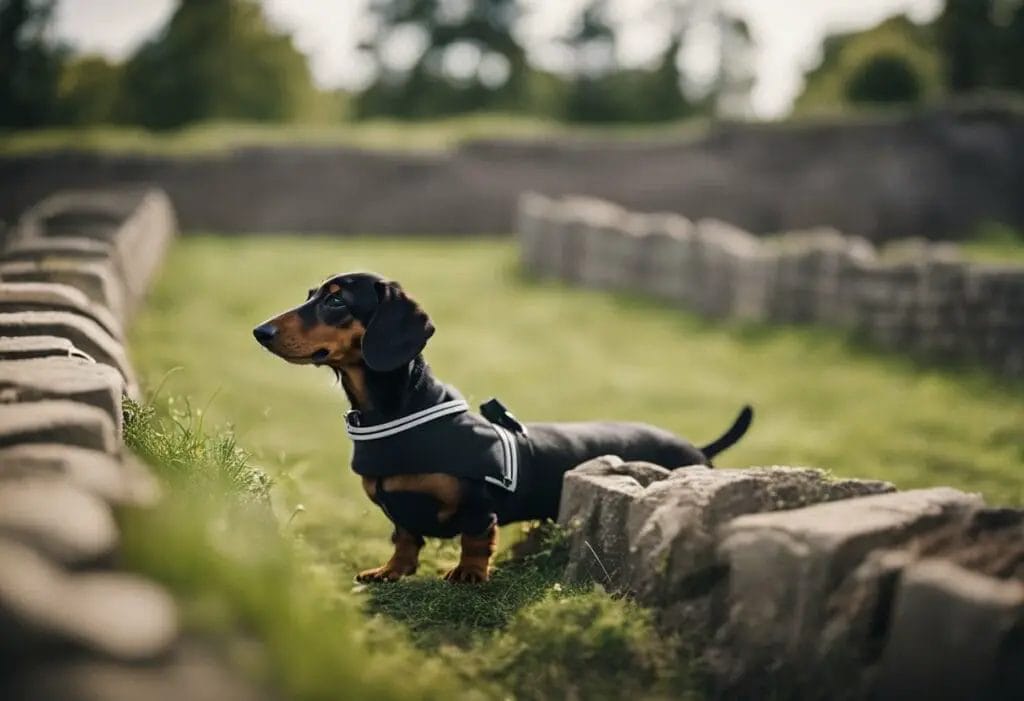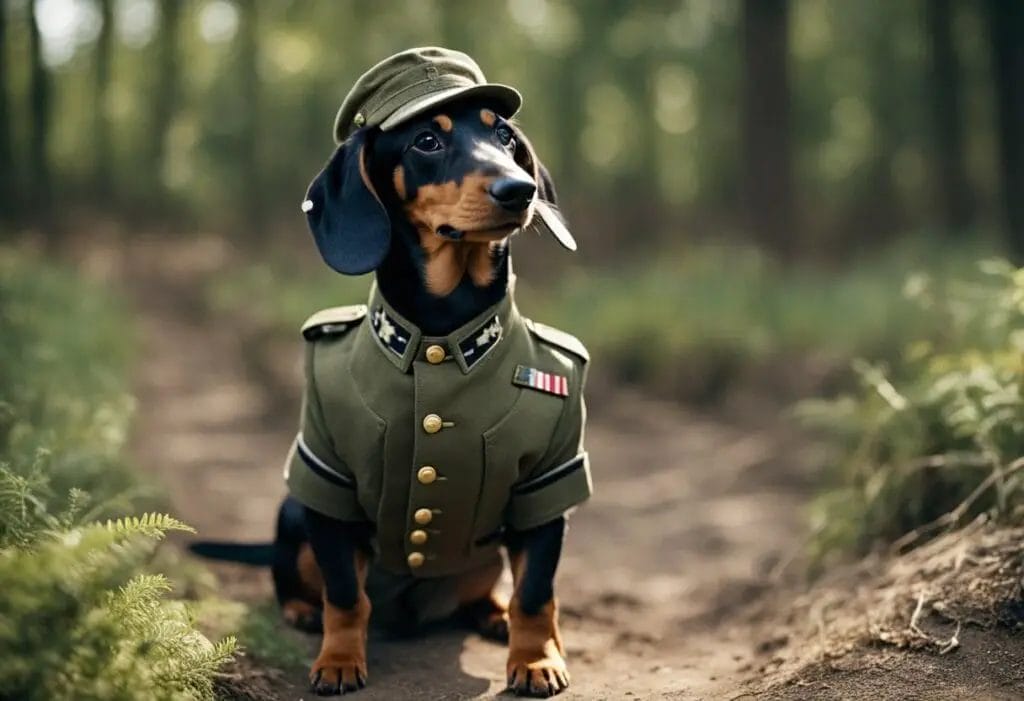Dachshunds, also known as sausage dogs, are a beloved breed of dog that has been around for centuries. They are known for their long bodies, short legs, and adorable personalities. However, what many people may not know is that these little dogs played a significant role in World War history.

During World War I, dachshunds were used as messenger dogs. They were small enough to navigate through the trenches and were trained to carry messages to and from the front lines. This was a dangerous job, as many of these dogs were injured or killed in action. Despite the risks, dachshunds proved to be invaluable to the war effort.
In World War II, dachshunds were once again used in the military. This time, they were used to sniff out landmines and other explosives. Their keen sense of smell and small size made them ideal for this task.
Many of these dogs saved countless lives by detecting hidden explosives before they could cause harm. The role of dachshunds in World War history is a fascinating and often overlooked aspect of their legacy.
Origins of the Dachshund
The Dachshund breed was created by crossbreeding various hunting dogs including German, English, and French hounds and terriers. The breed was initially developed in Germany in the 16th century to hunt badgers and other burrowing animals. The Dachshund’s short legs, long snouts, and tenacious personalities made them perfect for hunting prey in their burrows and tunnels.
There are three coat types of Dachshunds: smooth-haired, long-haired, and wire-haired. The smooth-haired Dachshund has a short, shiny coat, while the long-haired Dachshund has a silky coat that requires more grooming. The wire-haired Dachshund has a thick, coarse coat that is water-resistant, making them ideal for hunting in rough terrain. The long-haired Dachshund is a newer variation that was created by crossing the smooth and wire-haired types.
During World War II, Dachshunds faced persecution in Germany due to their association with the country’s past and culture. However, their popularity continued to grow outside of Germany, and they became known as “liberty hounds” in the United States. Dachshunds were also used as mascots by the German army during World War I, and their image was used on propaganda posters.
In conclusion, the Dachshund’s origin as a badger dog has played a significant role in their history and development. Their unique physical characteristics, such as their long bodies and short legs, make them excellent hunters.
The Dachshund’s coat types also reflect their hunting abilities, with each type having its own advantages in different terrains. Despite their association with Germany’s past, Dachshunds have become beloved pets all over the world and continue to bring joy to their owners.
Dachshunds in World War I
During World War I, Dachshunds played a significant role in the war effort. The breed was originally from Germany, which was one of the countries involved in the war. Dachshunds were used in various ways, including as mascots, liberty hounds, and even as red cross dogs.
Kaiser Wilhelm II, the German emperor, was known to be a big fan of the breed and had several Dachshunds as pets. His love for the breed was so great that he even had a statue of a Dachshund erected in front of his palace. However, the breed’s association with Germany also led to their persecution in other countries during the war.
In the United States, Dachshunds were renamed “liberty hounds” to distance them from their German origins. The American Kennel Club even changed the breed’s name to “badger dog” during this time. The breed was also used as a symbol of patriotism, with the “liberty pup” being a popular image on posters and other propaganda materials.
Dachshunds were also used as mascots by various military units during the war. For example, the 11th Engineer Regiment of the US Army had a Dachshund named “Red” as their mascot. The dog was said to be able to detect incoming artillery shells before they hit, and would bark to warn the soldiers.
In addition to their role as mascots and symbols of patriotism, Dachshunds were also used as red cross dogs during the war. These dogs were trained to locate wounded soldiers on the battlefield and bring back medical supplies. Their small size and ability to navigate difficult terrain made them ideal for this task.
Dachshunds in World War II

During World War II, Dachshunds were used by the Germans as a symbol of their nation. They were also used as mascots for many military units. However, despite their popularity, they were not used as extensively as other breeds such as German Shepherds or Alsatians.
One notable example of a Dachshund’s role in World War II was the case of Huis Doorn in the Netherlands. The former German Emperor Wilhelm II had been living in exile at the estate since the end of World War I. During the German occupation of the Netherlands in World War II, the estate was confiscated by the Nazis.
The Dachshund belonging to the estate’s gardener, named Lump, became a symbol of resistance against the Nazi occupation. Lump was smuggled out of the estate and hidden by the resistance. The story of Lump’s escape became a symbol of hope for the Dutch people.
Dachshunds were also used in advertisements during World War II to promote the sale of war bonds. These advertisements featured Dachshunds dressed in military uniforms, accompanied by slogans such as “Buy War Bonds for Your Dog’s Sake” and “Your Dog Can’t Fight, But You Can”. These advertisements were successful in raising funds for the war effort.
While Dachshunds did not have a significant role in World War I and II compared to other breeds, they still played a part in the war effort. Their popularity as a symbol of Germany and their use in advertisements helped to raise funds for the war effort. The story of Lump shows that even small dogs can make a big impact in times of war.
